Grid Legends is a great-looking racing game. While it doesn’t have the wide open scope of Forza Horizon, or the detailed on-track ray tracing of Gran Turismo, it does have excellent lighting and beautiful stages. That’s true across all the platforms, but the recent release on Android and iOS is intriguing. We’ve experienced mixed fortunes for triple-A titles released on mobile, but having played the game extensively on iPhone 15 Pro, I’m impressed. In fact, it’s one of the only triple-A iOS ports I can actually recommend.
Initial impressions suggest a favourable visual turnout on iPhone with results that seem broadly comparable to the last-gen Xbox One version of the game, but of course, there are some compromises. Lighting has been significantly simplified while shadows are obviously lower-res, with a sharper divide between cascades. Shadow aliasing is a bigger problem as a result, with coarser shadows that look less natural at rest. This becomes a more substantial issue in cockpit view, where the close camera perspective exposes the low resolution of the nearest cascade.
On top of that, foliage shadows also don’t animate on iPhone, presumably to reduce the number of shadow map updates the game has to process. I would say these shadow changes aren’t that noticeable in the typical third-person camera when actually driving at speed though. There are other small lighting changes throughout the game, like the less effective impression of ambient occlusion in this truck cockpit. The foliage in some tracks appears a bit flatter, with lower contrast shade beneath. Subtle lighting tweaks are present across the tracks if you look closely, though during gameplay their impact is more muted.
Volumetric lighting is probably the biggest flat-out omission here, as the trackside environment often no longer features volumetric lights. This makes a big visual difference in certain tracks, like this, though most tracks and times of day look similar enough. That said, there is one lighting tweak that actually favours the iPhone. The real-time cubemaps used for vehicle reflections on Xbox update at just 15Hz, once for every 2 frames essentially. On iPhone, they are full-rate, and distract much less and of a higher resolution.
Model detail also takes a hit. LODs pop in closer to the camera and texture detail is worse, despite the fact that I have the game’s high resolution texture pack installed. Texture filtering is reduced, crowds are simpler, while particle effects are pared back or gone. It goes without saying that resolution drops – Xbox One uses a dynamic 1080p that typically settles around 900p, while iPhone 15 Pro delivers around 630p with no sign of Apple’s impressive MetalFX upscaler.
That sounds like a long list of iPhone concessions, but comparing the two systems in broad strokes, the lighting looks similar, the models look much the same and the game is generally quite comparable. It’s definitely better than you’d expect from a Nintendo Switch conversion, for instance, where you’d usually see larger fundamental cutbacks to a game’s visual makeup.
To see this content please enable targeting cookies. Manage cookie settings
That’s all the more impressive given that performance is also strong. The game’s default graphics mode targets 30fps and holds up well enough in typical play, with a steady procession of 33ms frames for even frame-pacing. When the cars bunch up a bit though, frame-rates can briefly tumble down into the 20s. These performance dives are impactful, but usually occur towards the start of the race, when a lot of cars are in close proximity. Rewinds also tend to provoke frame-rate problems, though it has little gameplay impact. The Xbox One S exhibits similar behaviour, but tends to hold closer to the upper 20s, and doesn’t drop as often. It’s a better performer in trouble spots, but both machines do a reasonably good job of providing 30fps gameplay typically. Additionally, the motion blur present on both platforms makes the game feel decently smooth despite its lower frame-rate.
So far I’ve been talking about the default mode, which provides the closest analogue to the home console experience. But there are two other visual modes to look at as well, which come with their own trade-offs. The battery saver mode comes with a few cuts – most obviously the removal of the screen-space reflections, which makes a pretty big difference on wet circuits. Trackside spectators have been pared back slightly as well and there do seem to be minor LOD adjustments too, along with lower-res real-time cubemaps. But the biggest change is simply a big cut to rendering resolution, as the battery saver mode runs somewhere in the vicinity of 360p, though both modes feature an equally sharp HUD.
The upside though is that performance is very good, hitting a consistent 30fps in typical play. Large packs of cars don’t really faze it, except when we perform a flashback, where we sometimes see substantial drops – though with little gameplay relevance. The performance level is a good deal better than the graphics preset, and battery drain also appears to be reduced too. The performance mode has all the same visual compromises as the battery saver mode, except that resolution is a bit higher here at roughly 550p. However, this mode uses real-time cubemap reflections that update at half-rate, which means 20Hz here.
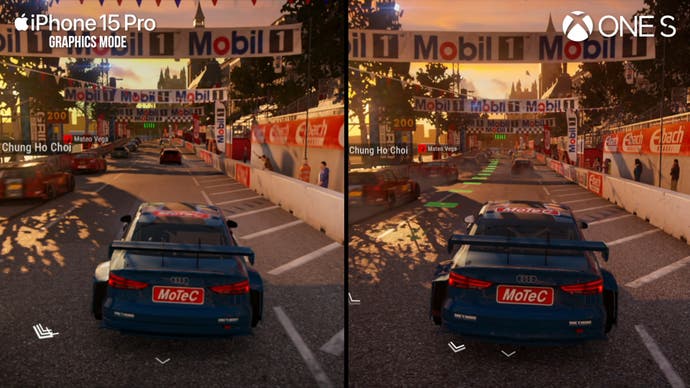
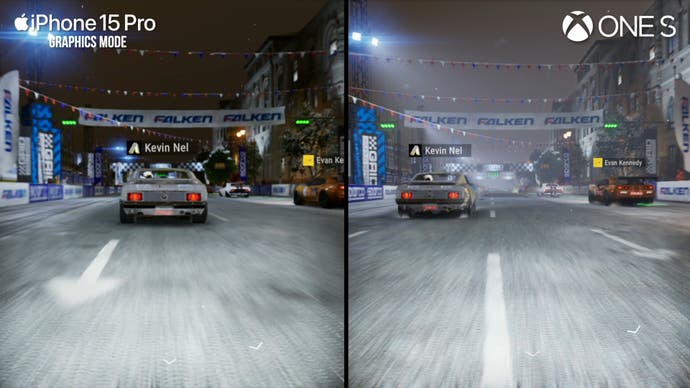
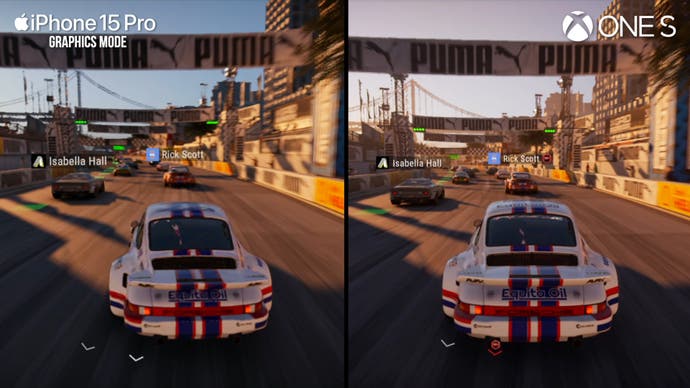
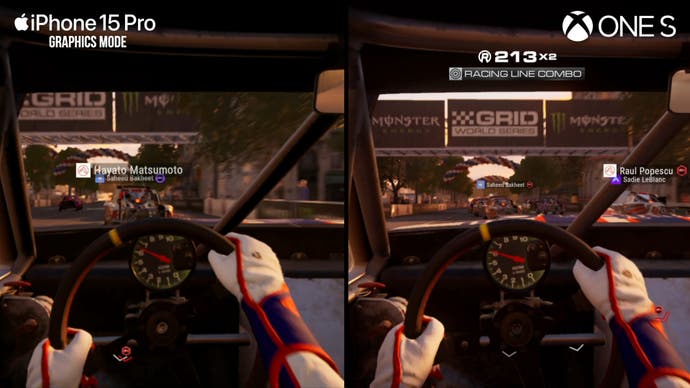
That’s because the performance mode now runs at 40fps by default on the iPhone’s 120Hz screen, which I haven’t actually seen before on iOS. Frame-rates here can dip a little when cars are bunched up, but generally the game flies along at a stable 40fps. If we limit the iPhone to 60Hz though, the game runs at 30fps, which is pretty sensible given that 40fps doesn’t divide evenly into 60Hz. I don’t have newer Apple devices on hand to test, though I did have a chance to play the game on a friend’s iPhone 16 Pro and the largest difference seems to be that the performance mode targets 60fps instead of 40 on my device, though dips seem more frequent.
I do however have an iPhone 13 Pro Max that I tested briefly. The option for high-resolution textures isn’t available due to RAM limitations, and there are some other cutbacks, like losing screen-space reflections in the graphics mode. But generally speaking, it’s a good-looking experience that runs at a decent performance level. The 13 Pro isn’t separated by very much in terms of raster performance from the 15 Pro though, as iPhone GPU performance uplifts have been more modest in recent cycles. Apple’s upgrades have concentrated more on RAM, ray tracing, and machine learning performance than improving GPU speeds for typical workloads, which is limited more strictly by current process technology.
Overall, Grid Legends works. The mode selections are useful, the overall look and feel of the game is retained and where there are cutbacks, they are mostly a non-issue when viewed on a small, mobile screen. Performance is solid too, unlike the majority of the last-gen iPhone ports I’ve looked at since the iPhone 15 Pro launched. There are a good number of compromises relative to home consoles, but it’s satisfyingly rich relative to other heavy hitters on the platform. It’s also a game that doesn’t require 8GB of RAM to operate, running fine on older iPhone devices, which is a plus for users who upgrade phones less frequently. So Grid Legends is a rare game indeed – an eighth-gen console port that I can actually recommend playing on iPhone. It doesn’t suffer from any glaring flaws, and is a well-optimised version of a beautiful racing title.
function appendFacebookPixels() { if (window.facebookPixelsDone) return; !function(f,b,e,v,n,t,s) {if(f.fbq)return;n=f.fbq=function(){n.callMethod? n.callMethod.apply(n,arguments):n.queue.push(arguments)}; if(!f._fbq)f._fbq=n;n.push=n;n.loaded=!0;n.version='2.0'; n.queue=[];t=b.createElement(e);t.async=!0; t.src=v;s=b.getElementsByTagName(e)[0]; s.parentNode.insertBefore(t,s)}(window, document,'script', 'https://connect.facebook.net/en_US/fbevents.js');
fbq('init', '560747571485047');
fbq('track', 'PageView'); window.facebookPixelsDone = true;
window.dispatchEvent(new Event('BrockmanFacebookPixelsEnabled')); }
window.addEventListener('BrockmanTargetingCookiesAllowed', appendFacebookPixels);
Source link
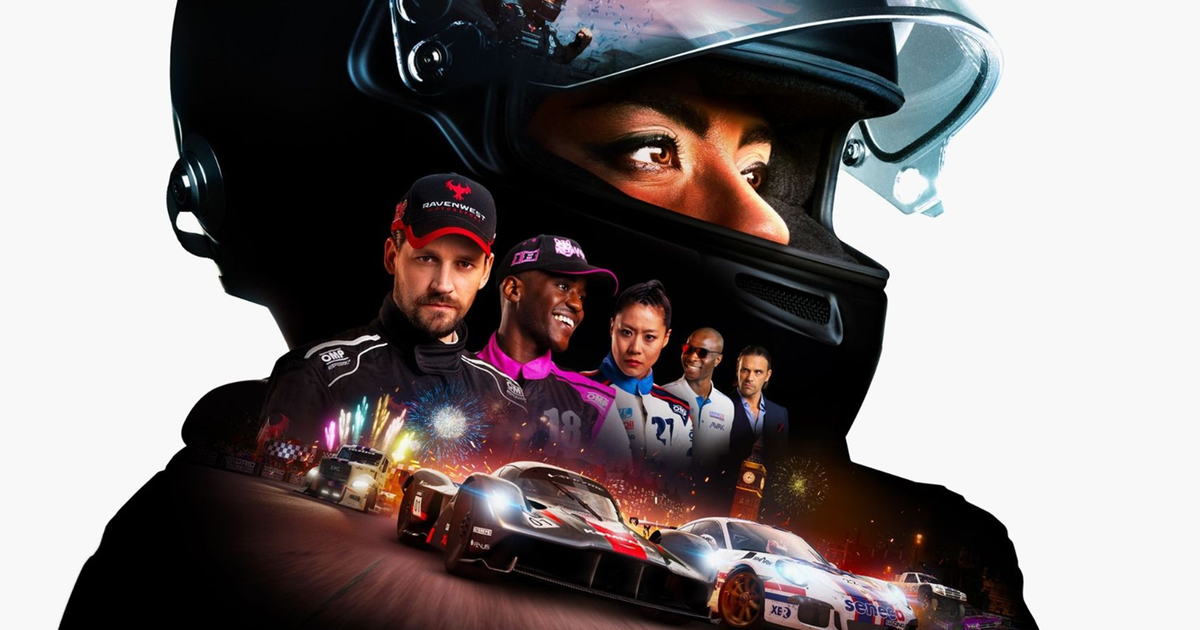










Leave a Reply